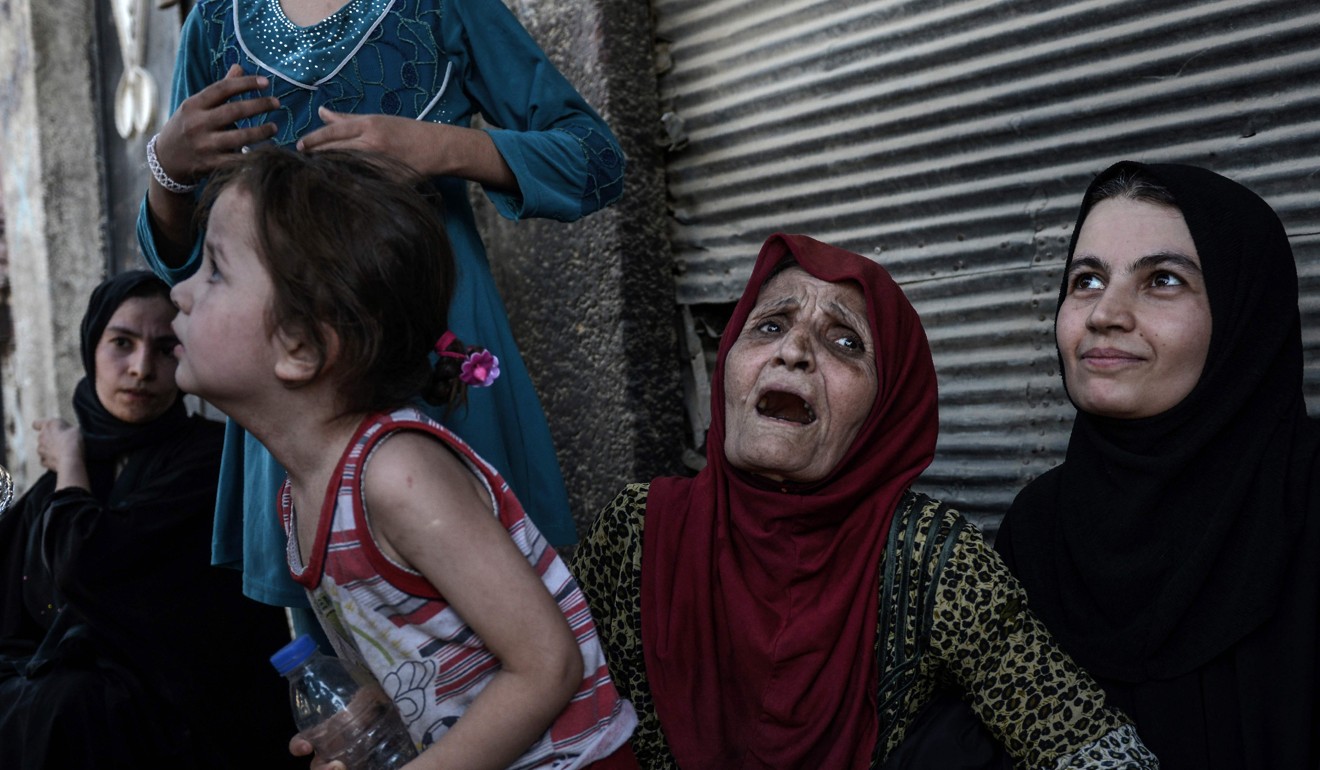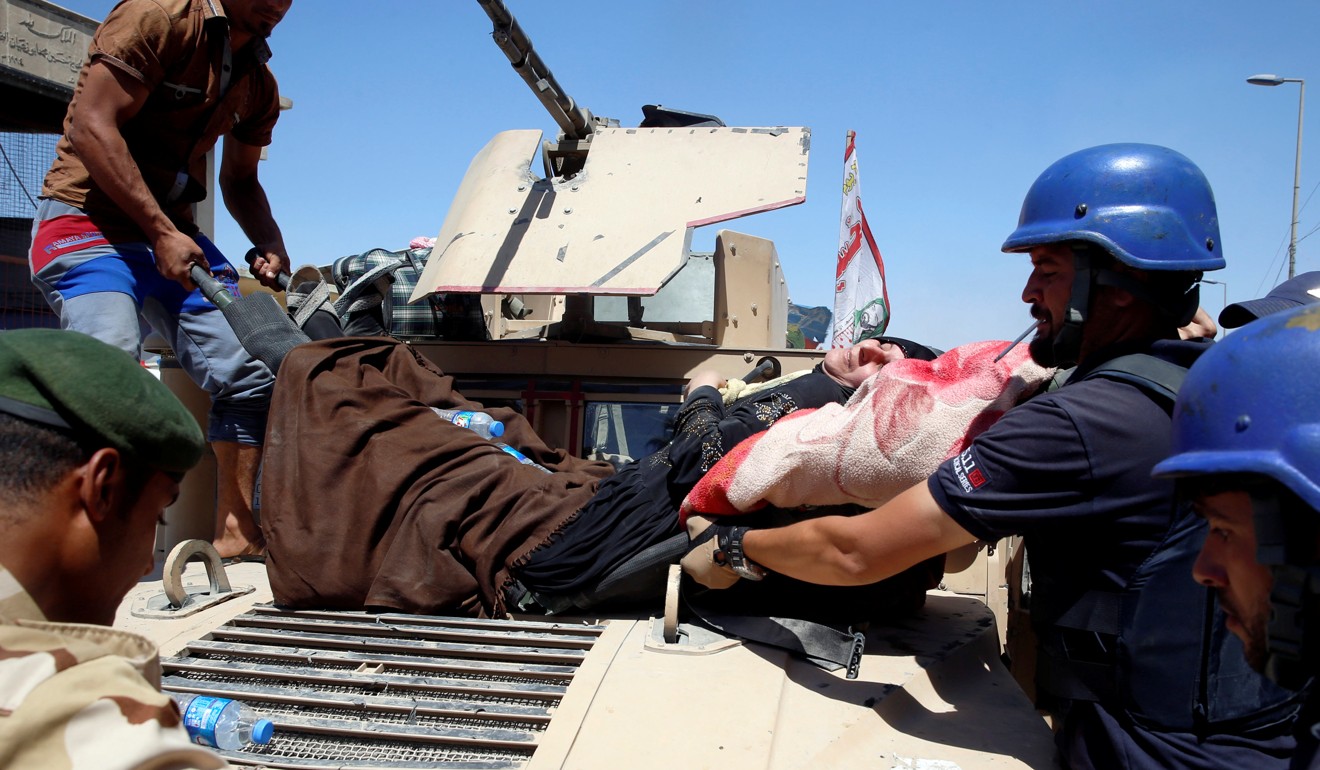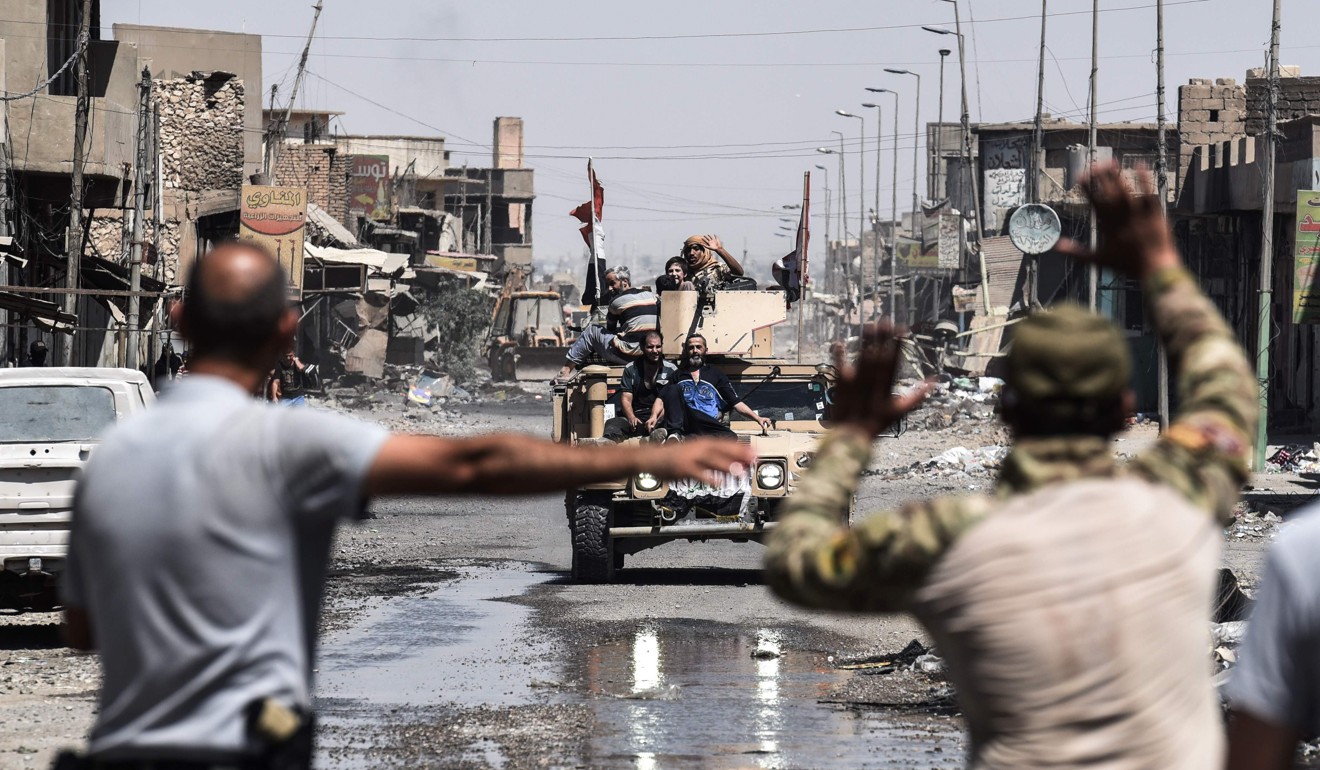
Iraqi forces battle street to street with jihadists to liberate Mosul as civilians flee
Iraqi forces battled their way along two streets that meet in the heart of Mosul’s Old City on Friday, and said they aimed to open routes for civilians to flee Islamic State’s last stand there.
US-trained urban warfare units are leading the fight in the maze of narrow alleyways of the Old City, the last district in the hands of the Sunni Islamist insurgents.
Iraqi authorities are hoping to declare victory in the northern Iraqi city in the Muslim Eid holiday, which marks the end of the fasting month of Ramadan, during the next few days.
Military analysts say the government troops’ advance will gather pace after Islamic State fighters blew up the 850-year-old al-Nuri mosque and its famous leaning minaret on Wednesday.
Its destruction gives the troops more freedom in attack as they no longer have to worry about damaging the ancient site.
It was in the al-Nuri mosque that Islamic State’s leader, Abu Bakr al-Baghdadi, proclaimed its “caliphate” over parts of Iraq and Syria three years ago.
A US-led international coalition is providing air and ground support in the eight-month-old offensive to drive the militants from their de facto capital in Iraq.
A map published by the Iraqi forces media office showed the elite Counter Terrorism Service pushing along al-Faruq Street, from north to south, and Nineveh Street, from east to west.
The two roads cross in the centre of the Old City. When the troops reach this point, they will have isolated the remaining IS fighters in four separate pockets.
“The aim is to open ways for civilians to evacuate, we give them indications by loudspeaker when it’s possible,” an Iraqi military spokesman said.

Some 7,000 civilians were brought out of the Old City during the day, the Iraqi state news website said.
Journalists in Mosul saw people reach safety, and that some were injured and had been carried on army Humvees to rear positions where they were given bananas, biscuits and water.
“The army’s 16th division evacuated us,” said a man who had fled with his wife and 15-day-old baby.
“God bless them,” said another man, who was limping.
Doctors Without Borders (MSF) reported an influx of wounded people to its trauma clinic in the west of the war-torn city early on Friday.
“This ... is yet another example of the horrific suffering and indiscriminate violence suffered by civilians, including women and children,” Jonathan Henry, MSF Emergency Coordinator for West Mosul, said in a statement.

More than 100,000 civilians - half of whom are children - are trapped in the crumbling houses of the Old City, with little food, water or medical treatment.
Aid organisations say Islamic State has stopped many from leaving, using them as human shields. Hundreds of civilians fleeing the Old City have been killed in the past three weeks.
The Iraqi government once hoped to take Mosul by the end of 2016, but the bloody campaign has dragged on as the militants reinforced positions in civilian areas, launched suicide car and motorbike bombs, laid booby traps and kept up barrages of sniper and mortar fire.
The military said it had defused dozens of booby traps as troops advanced on Friday.
The area still under IS control is about two square kilometers (0.77 square mile) in extent, alongside the western bank of the Tigris river which bisects Mosul.
The fall of Mosul would mark the end of the Iraqi half of the militants’ “caliphate” as a state structure, but Islamic State would remain in control of large areas in both Iraq and Syria.
Islamic State posted a video online showing the remaining square base of the mosque’s leaning minaret amid a mountain of rubble, with wrecked cars nearby.
The destruction caused anger and grief for Mosul’s people, who affectionately call the tower al-Hadba, or “the hunchback.”
Islamic State’s black flag had been flying on the 150-foot (45-meter) minaret since June 2014. Iraqi Prime Minister Haider al-Abadi said the militants’ decision to blow it up was an admission of defeat.

Baghdadi has left the fighting in Mosul to local commanders and has been assumed to be hiding in the Iraq-Syria border area. There has been no confirmation of Russian reports over the past week that he has been killed.
In Syria, the insurgents’ “capital,” of Raqqa is nearly encircled by a US-backed, Kurdish-led coalition.
US intelligence officials say Islamic State has already moved most of its leaders along with its online propaganda operation and its limited command and control of attacks in Europe and elsewhere south to Al Mayadin in eastern Syria’s Deir al Zour province.

